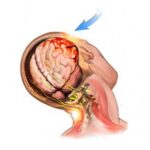 You might be surprised to learn that motor vehicle accidents resulting in serious injuries and traffic fatalities have dramatically increased during the pandemic.
You might be surprised to learn that motor vehicle accidents resulting in serious injuries and traffic fatalities have dramatically increased during the pandemic.
At first blush, this doesn’t make sense. With more Kansas Citians working and staying home amid the Covid-19 restrictions, you would think that car crashes leading to serious injury and road deaths would be down. But it turns out the opposite is true.
Traffic Deaths on the Rise in 2020
Although the final statistics have not been published, there are both state and national reports that show traffic deaths have increased even though there are fewer people driving.
As of December 22, 2020, Missouri State Highway Patrol is reporting 946 fatal crashes statewide. That represents a 10% increase compared to 2019! That is a substantial increase especially when you consider annual traffic deaths have been trending down since 2000.
Traffic fatalities were also up across the nation. The National Highway Traffic Safety Administration reported that there has been a 4.6% increase in traffic deaths compared to 2019 data comparing the first nine months of 2019 and 2020.
This state and national data tracks pretty close to what we are seeing at Horn Law. As Kansas City area accident and injury lawyers, our new cases reveal that violent crashes were on the rise in 2020. In fact, in one of the deadliest crashes of the year, two were killed in a Christmas night crash on I-470 near Woods Chapel Road in Lee’s Summit.
Why Are There More Violent Crashes with Fewer People Driving?
Highway safety experts are in agreement that speed has played a big role in the pandemic period crashes. Quite simply, the pandemic has created wide-open roads, which has unleashed more speeders and reckless driving.
As drivers go faster, it follows that the crash rate will increase. In fact, studies show that traveling above the speed limit creates about 13 times the risk of a collision.
It is also true that as people drive faster the risk of a serious injury or a traffic fatality also increases. The crash rate and violence of a high-speed collision are not only influenced by the severe force of impact, but also that speeding drivers have less time to avoid a hazard because the braking distance is longer, and they have less time to act to make an avoidance maneuver.
Therefore, when drivers “let it loose” on the open roads, they are more apt to lose control of the vehicle and less likely to be able to regain control of the vehicle in time to avoid a collision.
Moreover, speeding drivers are also more prone to collisions created by an overcorrection, which also leads to a greater chance of a violent crash.
Other Factors That Can Influence Crash Rates
When it comes to driving on area highways, especially when the roads are dry and clear, you will notice that a higher percentage of drivers are driving more aggressively. These high numbers of aggressive drivers on Kansas City highways are partly due to the fact that there are a reduced number of vehicles on the road.
But there are new studies that show that driving when angry, sad, depressed, or frustrated leads to a higher probability of a collision.
As we look back on 2020, I don’t think there is any doubt that Covid has created more mental distress and emotional instability for a substantial percentage of the population. Now, researchers at the Virginia Tech Transportation Institute found that the crash risk increases ten-fold when we are in a compromised state of mind. From my own personal observations, it does seem plausible that Covid-19 depression is revealing itself in people’s approach to driving.
A final factor to consider when assessing the new universe of risk on Kansas City highways is the high number of distracted drivers. It should come as no surprise that when you couple an aggressive driving approach with distracted driving (trying to manipulate a cell phone behind the wheel), you have a recipe for disaster.
Driving with the Highest Degree of Care
There is little question that our driving culture is trending downward as we head into 2021. The fact remains that a high percentage of drivers are driving dangerously. Most of this is due to an influx of distracted, aggressive, and reckless drivers. Several years ago about 5% of the drivers on the road were exhibiting dangerous driving habits, now it seems like the dangerous driver percentages are in the 30%-40% range.
Given my experience in handling crash cases over 30 years, I have gained insights into how we can advance driver safety, especially in the state of Missouri and on Kansas City highways. I am pushing our state traffic safety officials to adopt a statewide driver’s safety program that would encourage all drivers to protect themselves against this new onslaught of dangerous drivers.
The program I have in mind is called “Drive By Example” (DBE). The core mission of DBE is to influence drivers to protect themselves by adopting the safe driving approach that protects themselves, their passengers, and others on the road.
The safe driving habits are to always drive alert, buckled, cautious, and defensive. That is easy to remember as ABCD.
Culture change is not going to happen overnight, but I think we should start using social media platforms to do two things:
- Alert all drivers to the new universe of roadway risk.
- Remind drivers to protect themselves against dangerous drivers.
As we recover from Covid-19, hopefully driving behaviors will improve. However, we should never lose sight that driving behaviors were declining prior to 2020, and we should be aggressively dealing with these issues as I mentioned above.






